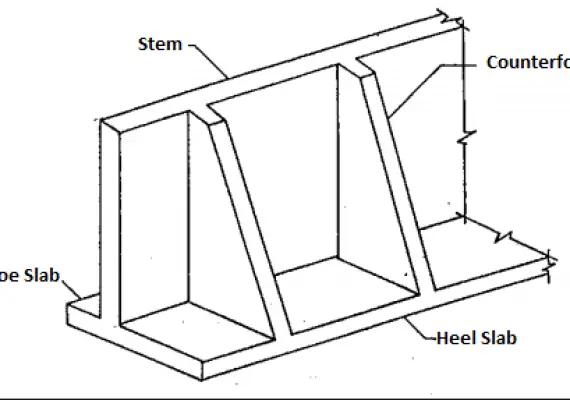What Is Field Vane Shear Test?
What Is Field Vane Shear Test?
The vane shear test is a method used to determine the undrained shear strength of saturated clays in their natural state without disrupting the soil. It is a straightforward, fast, and cost-effective way to measure soil shear strength, making it widely used in geotechnical investigations.
The vane shear test is a widely used geotechnical testing method that estimates the undrained shear strength of fully saturated clays without disturbing the soil.
While it is possible to perform the vane shear test on undisturbed soil specimens in a laboratory setting, it is more commonly carried out in-situ, or in the field.
The shear vane test involves using a specialized tool consisting of a rod equipped with vanes, which is inserted into the ground and rotated. The force required to cause the soil to fail, measured by a gauge on the top of the rod, is converted into a shear strength value.
This equipment has been in use since at least 1948 and has also been used to assess the shear strength of packed snow that may potentially cause a slab avalanche since at least 1967.
What Equipment Are Used In Shear Vane Test?
The shear vane test is a method for measuring the undrained shear strength of cohesive soil. It involves using a rod with four vanes arranged in a cruciform pattern and a handle/torque gauge. The rod is inserted into the soil to a depth of 500mm and rotated at a rate of 6-12 degrees per minute. When the soil fails in shear, the maximum torque applied is indicated on the gauge.
💥🎁 Christmas & Year-End Deals On Amazon !
Don't miss out on the best discounts and top-rated products available right now!
🛒 Shop Now and Save Big Today!*As an Amazon Associate, I earn from qualifying purchases.
The gauge is marked with a scale that converts the torque into a shear strength value, expressed in kiloNewtons per square meter.
There are two scales for use with different vane sizes: 150-by-75-millimeter vanes for soils with shear strengths up to 50 kN/m2 and 100-by-50-millimeter vanes for stronger soils. In the United Kingdom, the shear vane test is governed by British Standard 1377.
The shear vane test is a simple, portable method that is suitable for testing clay soils classified as soft to firm. The test can also be used to determine the sensitivity of the clay by remoulding the sample and retesting.
In addition, the shear vane test has been used to measure the shear strength of mortar mixes, where it has been shown to correlate with the slump value. The equipment has also been used to assess the shear strength of packed snow that may potentially cause a slab avalanche since at least 1967.
How is Shear Vane Test undertaken?
The vane shear test involves inserting the vane and rod vertically into the soft soil and slowly rotating the vane at a rate of 6 to 12 degrees per minute. The torque is measured at regular intervals until a maximum torque is reached and the vane rotates rapidly for several revolutions, indicating that the soil has failed in shear on a cylindrical surface around the vane.
The rotation is typically continued after shearing to estimate the remolded shear strength.
💥🎁 Christmas & Year-End Deals On Amazon !
Don't miss out on the best discounts and top-rated products available right now!
🛒 Shop Now and Save Big Today!*As an Amazon Associate, I earn from qualifying purchases.
The results of the field vane test include the following:
- Maximum undrained shear strength (at each test depth)
- Remolded shear strength (at each test depth)
- Sensitivity (i.e., the ratio of the maximum undrained strength to the remolded strength)”
